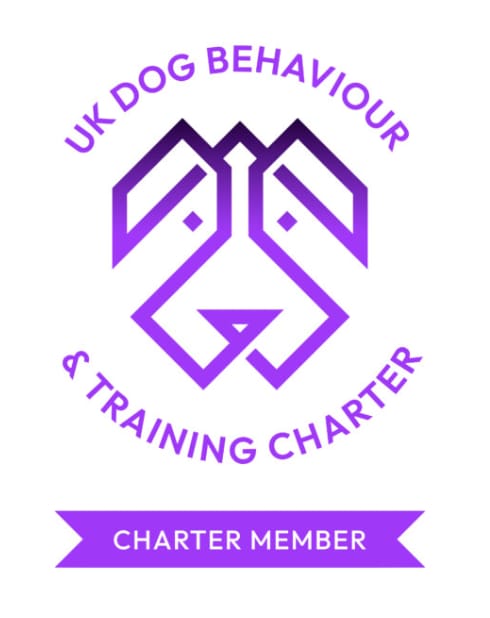Rethinking the 'End on a Good Note' Rule in Dog Training
07/08/2024 - Blog
As a dog trainer or owner, you've likely heard the age-old advice to "end your training session on a good note." It's a phrase that's been passed down through generations of trainers, often interpreted as continuing the session until your dog performs several good repetitions of the behavior you're working on.
But what if I told you that this well-intentioned advice might actually be hindering your training progress?
Let's challenge this conventional wisdom and explore why ending on a good note isn't always the best approach.
The Pitfalls of Pushing for a "Good Note" Ending
Imagine this scenario: You're working on teaching your dog a new trick. They perform a few decent repetitions, followed by several not-so-great attempts. Following the "end on a good note" rule, you persist, hoping for that perfect finale. You keep going... and going... and going... until your dog finally manages one or two more successful repetitions.
Sounds familiar? Here's why this approach can be problematic:
1. Wasted Time: You've spent a significant amount of time allowing your dog to practice unwanted behaviors.
2. Confusion: Your dog may become confused about what you actually want them to do.
3. Frustration: Both you and your dog might become frustrated during this prolonged process.
4. Reinforcing Mistakes: By repeating the behavior multiple times incorrectly, your dog may inadvertently strengthen those incorrect versions of the behavior.
A More Effective Approach to Training Sessions
So, if we're not aiming to end on a good note, when should we conclude our training sessions? Here's what I've found to be more effective:
1. Short, Focused Sessions: When teaching new behaviors, aim for brief sessions with just five to ten reinforcements.
2. Scheduled Breaks: After each short session, take a quick break. This allows you to assess your progress and plan your next steps.
3. Reading Your Dog: End the session if your dog's behavior isn't quite right. This could mean they're offering extra or unwanted behaviors, responding slowly to cues, getting distracted, or showing signs of stress or discomfort.
The Benefits of Stopping When Things Aren't Working
By ending the session when your dog isn't performing optimally, you:
1. Avoid reinforcing unwanted behaviors
2. Prevent frustration (for both you and your dog)
3. Give yourself time to evaluate and adjust your training plan
4. Create an opportunity to modify the training environment if needed
The key is to stop, take a short break, and ask yourself why your dog might be struggling with the correct behavior. Then, you can adjust your approach to make it easier for your dog to understand and succeed.
Overcoming the Urge to Keep Going
I'll be the first to admit that it's not easy to break the habit of trying to end on a good note. Like many trainers, I was taught this principle and sometimes still feel the urge to continue even when I know I should stop.
Changing this mindset takes practice, but I've found that being willing to stop more frequently actually accelerates my training progress. It allows for more thoughtful, targeted sessions that are ultimately more productive.
Conclusion
While ending on a good note might seem intuitive, it's not always the most effective training strategy. By being willing to end sessions when things aren't going well, taking time to reassess, and making necessary adjustments, you can create a more positive and productive training experience for both you and your dog.
If you are having problems with your dog's behaviour, contact us to see how we can help!
But what if I told you that this well-intentioned advice might actually be hindering your training progress?
Let's challenge this conventional wisdom and explore why ending on a good note isn't always the best approach.
The Pitfalls of Pushing for a "Good Note" Ending
Imagine this scenario: You're working on teaching your dog a new trick. They perform a few decent repetitions, followed by several not-so-great attempts. Following the "end on a good note" rule, you persist, hoping for that perfect finale. You keep going... and going... and going... until your dog finally manages one or two more successful repetitions.
Sounds familiar? Here's why this approach can be problematic:
1. Wasted Time: You've spent a significant amount of time allowing your dog to practice unwanted behaviors.
2. Confusion: Your dog may become confused about what you actually want them to do.
3. Frustration: Both you and your dog might become frustrated during this prolonged process.
4. Reinforcing Mistakes: By repeating the behavior multiple times incorrectly, your dog may inadvertently strengthen those incorrect versions of the behavior.
A More Effective Approach to Training Sessions
So, if we're not aiming to end on a good note, when should we conclude our training sessions? Here's what I've found to be more effective:
1. Short, Focused Sessions: When teaching new behaviors, aim for brief sessions with just five to ten reinforcements.
2. Scheduled Breaks: After each short session, take a quick break. This allows you to assess your progress and plan your next steps.
3. Reading Your Dog: End the session if your dog's behavior isn't quite right. This could mean they're offering extra or unwanted behaviors, responding slowly to cues, getting distracted, or showing signs of stress or discomfort.
The Benefits of Stopping When Things Aren't Working
By ending the session when your dog isn't performing optimally, you:
1. Avoid reinforcing unwanted behaviors
2. Prevent frustration (for both you and your dog)
3. Give yourself time to evaluate and adjust your training plan
4. Create an opportunity to modify the training environment if needed
The key is to stop, take a short break, and ask yourself why your dog might be struggling with the correct behavior. Then, you can adjust your approach to make it easier for your dog to understand and succeed.
Overcoming the Urge to Keep Going
I'll be the first to admit that it's not easy to break the habit of trying to end on a good note. Like many trainers, I was taught this principle and sometimes still feel the urge to continue even when I know I should stop.
Changing this mindset takes practice, but I've found that being willing to stop more frequently actually accelerates my training progress. It allows for more thoughtful, targeted sessions that are ultimately more productive.
Conclusion
While ending on a good note might seem intuitive, it's not always the most effective training strategy. By being willing to end sessions when things aren't going well, taking time to reassess, and making necessary adjustments, you can create a more positive and productive training experience for both you and your dog.
If you are having problems with your dog's behaviour, contact us to see how we can help!
Copyright © 2025 CK9 Training








